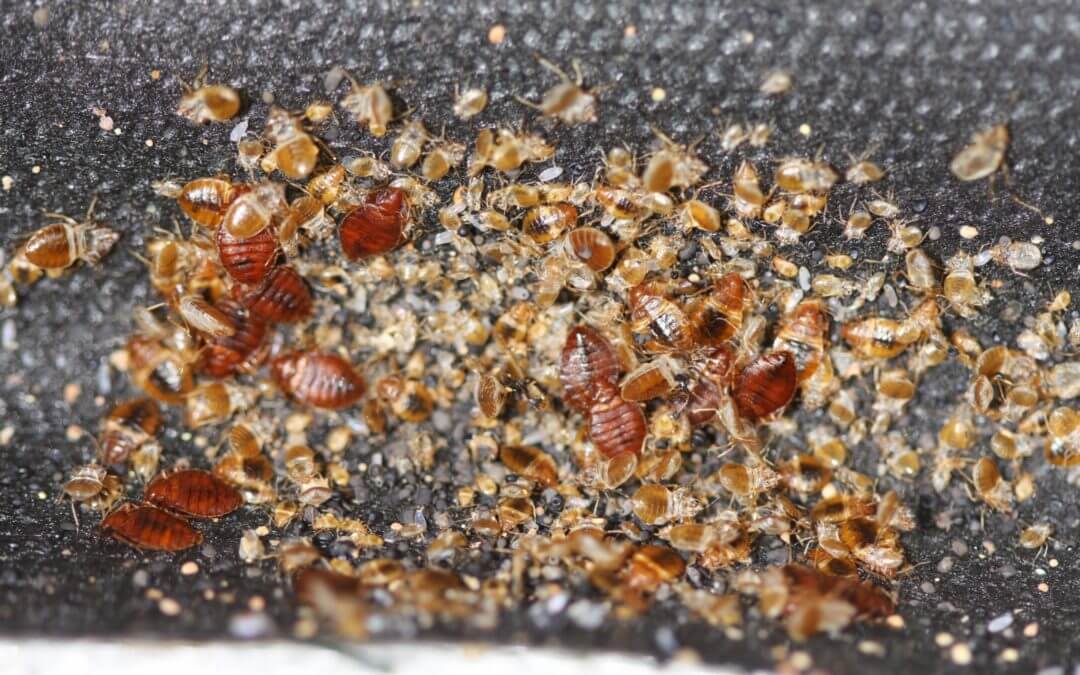A hotel can be a home away from home: a place to stay when you are on vacation or traveling for work. But it can be hard to relax if you are at risk for a bed bug infestation. Whether you are a hotel guest, the owner, or a hotel employee, it is important to learn how to check for bed bugs in a hotel.
Motels and hotels can be hot spots for bed bugs, and you could inadvertently bring the infestation home if these pests hitch a ride on your luggage. Follow these tips to check your hotel and avoid the risk of bed bugs at home.
Where to Check for Bed Bugs
The first thing you should do when checking into a hotel room is to inspect the room for signs of bed bugs. If you know how to check for bed bugs in a hotel, then you can avoid infestation problems.
Luggage Placement: Instead of setting your luggage on the floor or bed, it’s best to place it in the bathroom or on a luggage rack to keep it away from bed bugs while you are inspecting the room. It is best to keep your suitcase on the luggage rack and closed at all times. Keeping your clothing and personal items in the luggage reduces the probability of picking up bed bugs in other areas of the room.
Bed: Pull back the blankets and sheets. Check all areas of the mattress and box springs, including cracks, crevices, and underneath. Bed bugs are visible to the naked eye: look for living or dead bugs, as well as the casings (exoskeletons) that are left behind by these bugs. Dark, rust-colored spots are also an indication of bed bugs.
Upholstery: Bed bugs can also live in other areas of the room, including the headboard, upholstered furniture, and more. Check the seams of the furniture, including the head and neck areas where bugs might crawl into the crevices.
Change Rooms: If you notice any signs of bed bugs, then it’s time to talk to the hotel staff about changing rooms.
One tip for travelers: it can be helpful to bring a small flashlight in your suitcase, making it easier to look in the dark corners of the hotel room.
How Do I Know if It’s a Bed Bug?
Look for these features when identifying bed bugs in your hotel:
- Reddish-brown insects
- Small, oval-shaped bodies
- Flat bodies that swell after feeding
- Approximate size of an apple seed
- Quick movement on floors, walls, and ceilings
- Eggs are the size of a speck of dust
You can also tell that there is a bedbug problem due to the bites that happen while you are sleeping. These bites are usually itchy welts, often in the ankle area – but the bugs can bite the skin anywhere on the body.
Preventing Yourself From An Infestation
If you have any concerns about bringing bed bugs home, then it is important to be proactive with your treatment plan from the moment you walk through the door. Tumble your clothing in a hot dryer for 30 minutes to kill the bugs. It can also be helpful to have a Cryonite system on hand if you travel often.
Bed bugs are a serious problem for travelers, but an even bigger problem for hotel owners. Proper pest management is an essential part of your business. A bed bug infestation could result in a bad reputation, which will take a toll on the profitability of your company. That’s why a tool like Cryonite is a great investment.
Cryonite is a non-toxic pest control system that uses non-pesticide techniques to manage smaller insects in contact. This system is a discrete pest control solution: you can treat individual hotel rooms without the need to close the entire building. Invest in Cryonite and train your employees and staff to check for bed bugs, so timely treatment can be completed in the hotel rooms as needed.
Learn more about how to check for bed bugs and avoid hotel infestations. You can download our Guidelines for Bed Bugs in Hotels.
Get the Guide For Bed Bugs in Hotels

